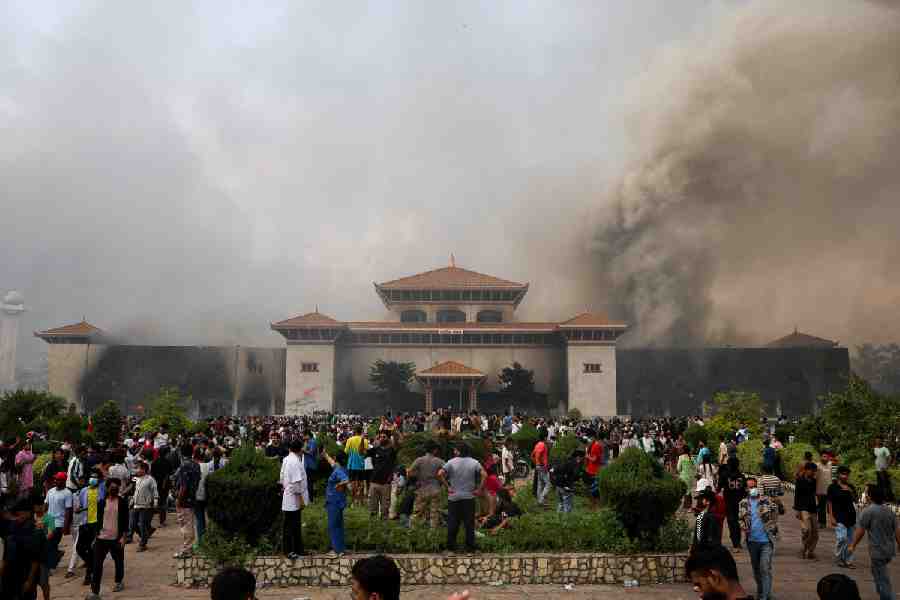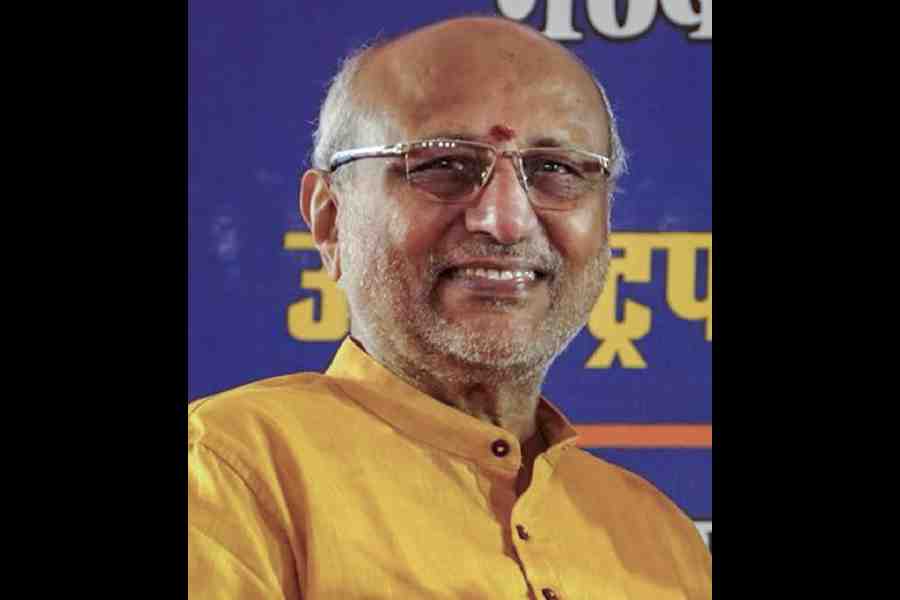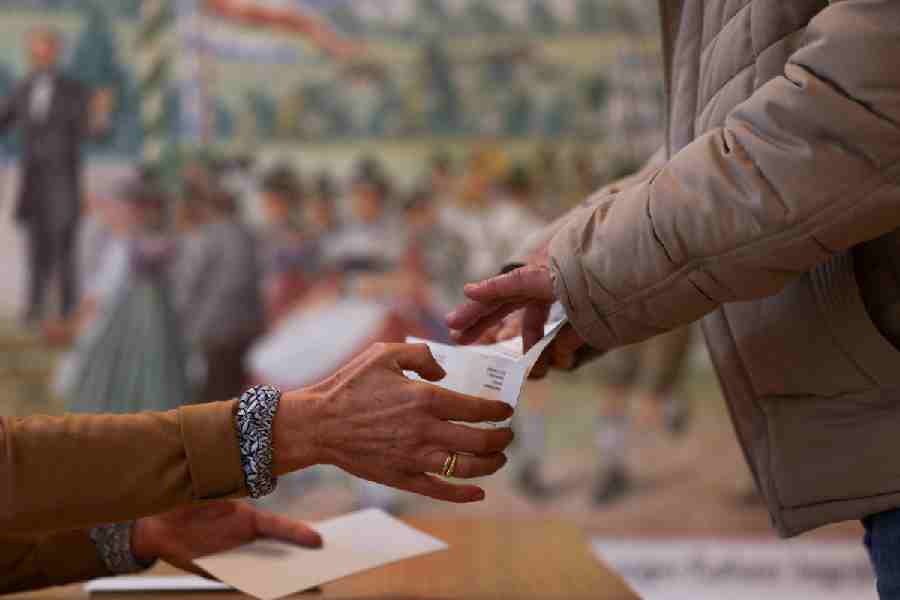 |
| TERMS OF ENDEARMENT: The lesbian community says that the scenes of love-making in the film are shown without tenderness |
You arrive a few minutes early, at the designated coffee shop, for an interview with Malobika Chakra- borty, a just-peeping-out-of-the-closet lesbian and founder-member of Sappho — a lesbian rights movement, which was started in the city exactly five years ago today. Half expecting her to breeze in like Isha Koppikar’s character — darting dagger looks and spewing venom at the men around — in Karan Razdan’s recently released film, Girlfriend, you are just a little bit disappointed, when a few minutes later, a heavy-set woman in her early 40s saunters in, virtually unnoticed, wearing a starched white sari and terracotta jewellery and an apologetic smile for being late.
No, Chakraborty exudes nothing of that brash, irreverent, in-your-face lesbianism Razdan portrays in Girlfriend, a film ostensibly about a lesbian relationship, but trashed by critics as really little more than a “flop” skin flick. And that is just as well, because Chakraborty is here, in the first place, to talk about how the film is a complete distortion of reality.
Chakraborty rarely gives up a chance to watch anything that is even remotely concerned with the subject of homosexuality. “This is because,” she explains, “I am perpetually on the lookout for some realistic portrayal of lesbianism in the media”. But not only is that hard to come by, according to her, to this day she hasn’t come across a single illustration of a lesbian relationship, which can come even close to being termed satisfactory.
So when Girlfriend released in Calcutta on June 11, amidst much hype, she decided to check it out. She bought a couple of tickets for the noon show and several packets of buttered popcorn and with her girlfriend and live-in-partner, Anamika in tow, walked into the movie hall and hoped for the best.
But in the two hours or so that ensued, Chakra- borty had seen, in her own words, “some of the worst cinema footage that was doled out in the name of lesbianism”.
“First of all,” she cribs, “the so-called lesbianism portrayed here reflects nothing of the actual truth”. And what the truth about lesbianism is, Chakraborty should know. For the last 23 years she has been leading an “actively lesbian” — read sexual and social — life. Though she started feeling attracted to other women in her early teens — something which confounded her no end because evidently none of her other female friends felt the same way — it was when she was 17 that she had her first brush with lesbianism. “I had gone to study in my classmate’s house,” she recalls, narrating the details of her ‘first romance’. “There I tripped and fell on the staircase and cut my foot. Then my friend’s sister, who was six years older than me, called me to her room and dressed my wound.” According to Chakraborty it was a very tender moment and both of them felt drawn towards each other.
“Tenderness and gentleness are very important elements in most lesbian relationships,” she explains, pointing out that in the film the friendship between the two women — played by Amrita Arora and Isha Koppikar — was totally devoid of these qualities.
In fact, the two characters meet in the backdrop of violence and suggestions of rape with the character of Koppikar bashing up the guys who make a pass at Arora’s character. Then it is more lust than anything else, which makes the two women decide to dive into bed. The scenes of their love-making, branded alternately by critics as “sleazy” and “steamy” are depicted without any trace of tenderness.
And while Chakraborty does not want to generalise or make blanket statements on behalf of her clan, in her personal experience, the kind of one-night-stand that the movie projects is a rarity amongst her breed. This is because hers is a sorority which is given to extreme loyalty, the kind that is born out of one’s deep understanding of the other’s peculiar plights and dilemmas. “There are so few of us and there are so few out there to understand what we are going through,” says Chakraborty, with a tinge of sadness, “that we can’t afford to rub each other the wrong way”.
Chakraborty also scoffs at the way the film shows lesbians as haters of men. When a man in the film, played by Ashish Chowdhary, falls in love with Arora’s character, the other woman, who is supposed to be a ‘hardcore’ lesbian, gives her ‘girlfriend’ the lowdown on the creeps that men are. Chakraborty will have you know that lesbianism is not synonymous with misanthropy. Just as male homosexuality is not synonymous with misogyny. “We are as fond of men as two heterosexual women are fond of each other,” she exclaims, exasperated that anyone should think otherwise. Then she adds, “We are just not sexually attracted to men.” She also takes offence when in one scene, the character of Koppikar announces that she feels like a man — while, ironically, venomously hissing out the word ‘man’ — trapped inside a woman’s body. “Why would I want to be a man?” Chakraborty questions rhetorically. “I am a woman stuck in a woman’s body who loves other women stuck in women’s bodies,” she says.
Nor is lesbianism necessarily a reaction to some form of sexual abuse, as is usually implied — even in such speciously “sensitive” films as Deepa Mehta’s Fire. “Lesbianism is not something acquired,” she says. “At least not necessarily.”
Of course, there have been many attempts to understand homosexual behaviour, by sociologists and psychologists alike. Says clinical psychiatrist Dr Debashish Ray, associated with Suraksha Clinic in Salt Lake, “Some theories do suggest that certain kinds of homosexuality are acquired and are a result of sexual abuse — which can turn the victim of abuse into either being sexually responsive to the gender of the abuser or being totally repelled by it.” Other theories, which suggest that homosexuality is biological, point to chemical compositions in the brain and hormonal ‘imbalances’. It has even been attributed to genetics.
And Chakraborty’s is a case in point. She grew up in a small family— with her parents and younger brother — in Naihati, West Bengal. While growing up she never faced abuse, sexual or otherwise. “Both my parents were very loving, giving and understanding,” she says. She was a gregarious child and very outgoing as a teenager, with many friends, both male and female. But she was never tomboyish. “Many people who know that I am a lesbian ask me whether I was a tomboy. They associate lesbianism with masculinity,” she says.
Razdan’s brand of lesbianism — which, Chakraborty is convinced, is a product of little research and less homework — and such films which perpetuate it, are according to her, responsible for the setbacks which gay rights movements continue to suffer. Isha’s character brandishes her man-hate in a way that “real-life lesbians” wouldn’t think of doing, she says.
Contrast that with the ground reality of Chakraborty’s inhibited life. Unsure, for many years, about where she fitted in, she realised that her sexual orientation made her a minority in her own country, her own city.
The law, she realised, is against her and it has been one of Sappho’s endeavours to try and influence lawmakers to repeal Article 377 of the Indian Penal Code, which considers “unnatural sex” — under the purview of which lesbianism also falls — a criminal offence, punishable by imprisonment.
It is therefore not that surprising and on second thoughts not that disappointing, that Chakraborty does not breeze into a designated coffee shop wearing her sexual preference on her sleeve.
Chakraborty, in fact, is guarded and reluctantly gives out her identity, fearing many things — among them losing her job as a central government employee because of the provisions of 377 and losing her face to the social stigma of lesbianism.










